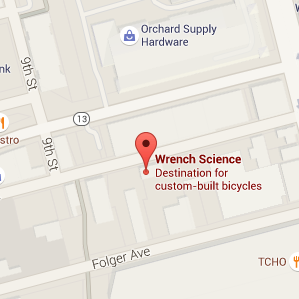What is an all-road bike? The definition is in the name since it’s a bike designed to be able to be ridden over a variety of paving surfaces from smooth tarmac to light gravel. Having a bike that can ride over lots of different types of surfaces is not a new thing, since that has been expected of bikes from almost the beginning. But having it as a category of its own with special features included that you will not find on road-specific and racing bikes is what sets the best all-road bikes apart.
All-Road Bike Features
All-Road bikes will typically have road frames with drop bars, and to the casual observer might not look any different from a standard road bike. But the difference comes in the details since all modern all-road bikes are being designed to accommodate wider tire clearance, which will assist when riding over rougher roads and hardpack gravel.
The real breakthrough for all-road as a category came with the advent of disc brakes being developed to suit road bikes. Previously, tire width had been governed by rim brakes and the minimal tire size the shape of the rim brake could accommodate. Road bike frames were seldom designed to suit more than 25mm or at most 28mm tires since most rim brakes couldn’t fit anything bigger.
But with the advancement in disc brakes and road bikes, that limiting factor for tire width was removed, and all-road bikes could be designed to accommodate wider tires specifically for the purpose of multi-surface riding.
What are the best all-road bikes
With the amount of choice available in the cycling industry, there is almost certainly the perfect bike for every type of cyclist. However, when looking to buy the best all-road bike or even build a custom all-road bike, there are certain parameters to follow. For instance, frame design should not only focus on tire width but comfort as well. All-Road bikes should be made to be comfortable when ridden for extended periods over rough roads.
So whatever material is used – carbon, titanium, steel – it should be designed to absorb road chatter to help you remain free from fatigue for as long as possible. That vertical compliance should not detract from the overall performance of the bike, though. The frame should still offer a nice level of nippiness when you want to accelerate or need to power over a climb.
Certainly the perfect all-road bike should accommodate a decent amount of rubber. Anything more than 30mm tire width should be sufficient for more all-road adventures, though if the manufacturer can design the frame to fit up to 35mm, then we would consider that perfect. It should be remembered that all-road bikes are not the same as gravel bikes. They should not be expected to be able to cover the same type of difficult or rough gravel. But they will also most likely perform much better on well paved roads than a gravel bike would.
What to look for when building a custom all-road bike
If you are planning on building a custom all-road bike according to your own riding style and surface requirements, then the Wrench Science Bike Builder online tool can help. Questions you should ask yourself from the outset is what geometry will most suit you? Do you want to have a little more comfort or do you want to focus on speed over multi-surfaces?
What frame material are you interested in? All-Road bikes come most commonly in carbon, titanium, and steel. Each material has its own advantages and disadvantages. Carbon is lighter but can seem a little harsher than titanium or steel, which will perhaps add a little weight. There is no right or wrong answer. You just need to know your priorities and choose accordingly.
What will your multi-surface terrain require in terms of tire width? Will it be mostly loose tarmac with a little hardpack gravel? Then maybe 30mm will be enough for you. Or do you see yourself spending more your time on light gravel away from the tarmac and traffic? In that case, you may want to be certain to find a manufacturer who carries frames that can run up to 35mm tires.
Another choice will be between 2x and 1x drivetrain options. Do you want to run a traditional double chainring up front with a tightly packed cluster of gears in the cassette for smooth transitions in pedaling cadence when changing gears? That is often preferable for riders focusing primarily on the road and less on unpaved sections. However, if you are looking to spend a good deal of time on light gravel, especially in hilly regions, then a 1 chainring in the front with a wider gear cluster in the back could prove useful.
With such freedom of multi-surface choice, the all-road bike is quickly becoming the most popular type of bike on the market today. The expansion of all-road as a design category means that we can all start to think of new types of adventures and exploration on two wheels.




























































































































































































































































